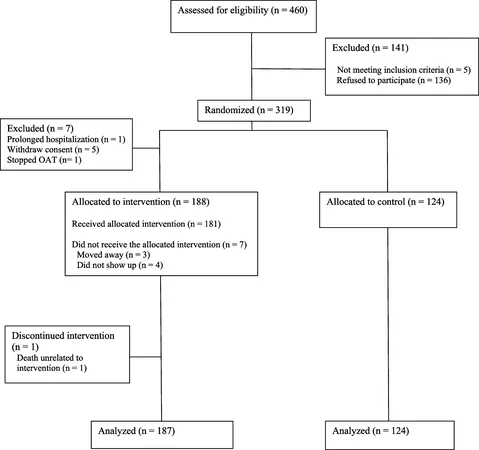
Breakthrough Research Unveils Secrets of Tooth Enamel: How One Gene Could Change Everything!
2025-07-02
Author: Jia
Unlocking the Mystery of Tooth Enamel
Tooth enamel may be the toughest substance in the human body, but it’s not immune to genetic disorders that can leave it weak and vulnerable. Issues like sensitivity and decay can arise from conditions such as amelogenesis imperfecta and Kabuki syndrome, the latter not only causing dental anomalies but also unique facial features and intellectual challenges.
Genius Experiment Reveals Critical Insights
Enter Hyuk-Jae 'Edward' Kwon, a groundbreaking oral biologist from the University at Buffalo (UB), whose research is shaking the medical community. Kwon and his innovative team conducted a striking experiment by genetically engineering mice to disable the KMT2D gene, pivotal for healthy enamel formation. What they uncovered was eye-opening: these mice exhibited teeth eerily similar to those found in patients with Kabuki syndrome—rough, chalky, and significantly thinner than average.
From Lab Research to Global Recognition
Their findings, which also suggest that targeting KMT2D with specific drugs could potentially reverse enamel weaknesses and even prevent craniofacial birth defects, have just been published in the prestigious Journal of Dental Research. This groundbreaking study marks KMT2D as a vital player in enamel development and has catapulted Kwon into the international spotlight.
On June 24, he secured second place in the IADR Joseph Lister Award for New Investigators competition at the International Association for Dental, Oral and Craniofacial Research (IADR) event in Barcelona!
The Fragility of Discovery
Research scientist Jung-Mi Lee, part of Kwon's team, focused on the epithelium—the oral cavity’s surface tissue—bringing crucial data to the project. "We started observing that these mice developed exceptionally fragile teeth that would break easily while eating,” Kwon elaborates. Alarmingly, the enamel defects were already apparent before the teeth broke through the gums.
The Power of KMT2D
The results illuminated KMT2D's role as an essential 'on switch' for enamel-forming cells. Kwon stated, "When KMT2D is missing or disrupted, the enamel-producing cells fail to receive the proper signals, leading to improper development.”
Future Research Could Change Lives
The research team, including experts from various disciplines, is now gearing up to test potential drugs in pregnant mice, aiming to reverse or prevent oral cavity birth defects during crucial developmental stages. They are also tackling the challenging issue of cleft palates—a common orofacial anomaly associated with Kabuki syndrome.
Kwon poignantly noted, "In mice, a cleft palate leads to 100% mortality. Although humans survive this condition, it remains a significant burden. Finding ways to correct or prevent such disorders could be revolutionary.”
The Future of Dental Research Is Bright
Highlighting the importance of epigenetics, a field that explores how environmental factors can influence gene expression, Kwon stated, "This area is rapidly evolving within developmental biology. In the future, if we can develop the right blueprint for creating teeth or even entire organs, the implications for regenerative medicine could be extraordinary."


 Brasil (PT)
Brasil (PT)
 Canada (EN)
Canada (EN)
 Chile (ES)
Chile (ES)
 Česko (CS)
Česko (CS)
 대한민국 (KO)
대한민국 (KO)
 España (ES)
España (ES)
 France (FR)
France (FR)
 Hong Kong (EN)
Hong Kong (EN)
 Italia (IT)
Italia (IT)
 日本 (JA)
日本 (JA)
 Magyarország (HU)
Magyarország (HU)
 Norge (NO)
Norge (NO)
 Polska (PL)
Polska (PL)
 Schweiz (DE)
Schweiz (DE)
 Singapore (EN)
Singapore (EN)
 Sverige (SV)
Sverige (SV)
 Suomi (FI)
Suomi (FI)
 Türkiye (TR)
Türkiye (TR)
 الإمارات العربية المتحدة (AR)
الإمارات العربية المتحدة (AR)